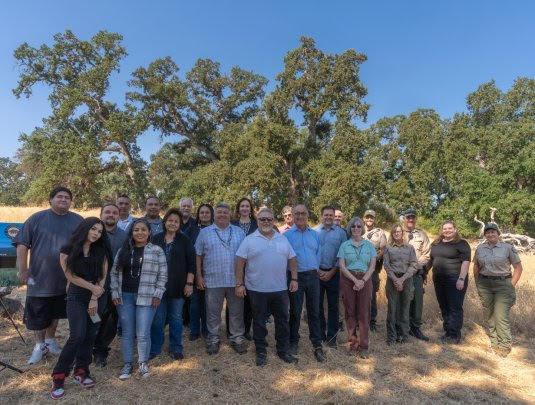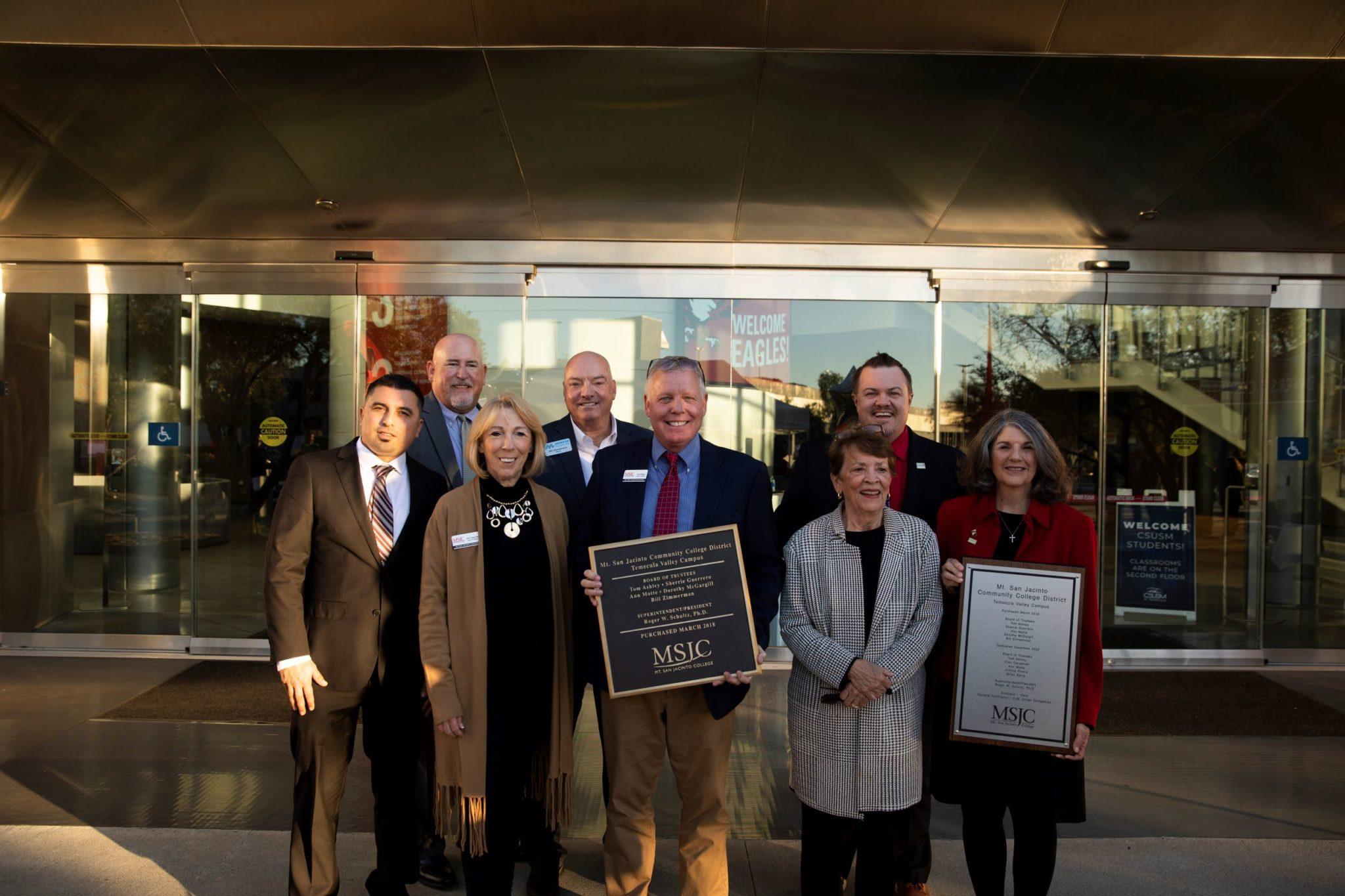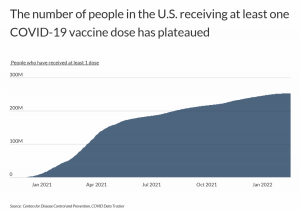The Valley Chronicle - How to restore financial sustainability to publ
How to restore financial sustainability to public pensions
Then, for years, whether intentionally or via a culture that encouraged wishful thinking, CalPERS obfuscated the deepening financial challenges from local officials and the public, deferring the day of reckoning.”
■ Edward Ring / Contributed Last month the League of California Cities released a “Retirement System Sustainability Study and Findings.” The findings were not surprising. “Key Findings” were (1) City pension costs will dramatically increase to unsustainable levels, (2) Rising pension costs will require cities to nearly double the percentage of their general fund dollars they pay to CalPERS, and (3) Cities have few options to address growing pension liabilities. These findings corroborate the California Policy Center’s concurrent recent updates on the pension situation in California. In the Jan. 31 update, “California Government Pension Contributions Required to Double by 2024 – Best Case,” and the Jan. 10 update, “How Much More Will Cities and Counties Pay CalPERS?,” using CalPERS own “Public Agency Actuarial Valuation Reports,” it is shown that over the next six years, participating cities will need to increase their payments to CalPERS by 87 percent, from $3.1 billion in the 2017-18 fiscal year to $5.8 billion by the 2024-25 fiscal year. This 87 percent rise in pension payments, officially announced by CalPERS, is definitely a best case. The report from the League of California Cities offers the following footnote on page 1 that underscores this fact: “Bartel Associates used the existing CalPERS’ discount rate and projections for local revenue growth. To the extent CalPERS market return performance and local revenue growth do not achieve those estimates, impacts to local agencies will increase. Additionally, the data does not take into account action pending before the CalPERS Board of Administration to prospectively reduce the employer amortization schedule from its current 30 year term to a 20 year term. Should the Board adopt staff’s recommendation, employer contributions are likely to increase.” The report from the League of California Cities includes a section entitled “What Cities Can Do Today.” This section merits a read between the lines: Analysis of recommendations to cities confronting unsustainable pensions 1. – “Develop and implement a plan to pay down the city’s Unfunded Actuarial Liability (UAL): Possible methods include shorter amortization periods and prepayment of cities UAL. This option may only work for cities in a better financial condition.” 1. (reading between the lines) – PAY CALPERS MORE. Reduce the unfunded liability by making your annual catch-up payment even more than CalPERS is instructing you to pay in their “Public Agency Actuarial Valuation Reports.” Doing this will save money over several years. But only if you can afford it. 2. – “Consider local ballot measures to enhance revenues: Some cities have been successful in passing a measure to increase revenues. Others have been unsuccessful. Given that these are voter approved measures, success varies depending on location.” 2. (reading between the lines) – RAISE TAXES. Do what you’ve been doing incessantly ever since pension benefits were enhanced right before the financial crisis of 2000 wiped out the pension fund surplus. Raise taxes. Say it’s “for the children” and to “protect seniors,” and based on the last several years of data, there is an 80% chance voters will approve the new tax. 3. – “Create a Pension Rate Stabilization Program (PRSP): Establishing and funding a local Section 115 Trust Fund can help offset unanticipated spikes in employer contributions. Initial funds still must be identified. Again, this is an option that may work for cities that are in a better financial condition.” 3. (reading between the lines) – PAY CALPERS MORE. Make payments into a separate investment fund, over and above your annual pension payments, earmarked for CalPERS. Then draw on those funds when the annual pension payments increase. But only if you can afford it. 4. – “Change service delivery methods and levels of certain public services: Many cities have already consolidated and cut local services during the Great Recession and have not been able to restore those service levels. Often, revenue growth from the improved economy has been absorbed by pension costs. The next round of service cuts will be even harder.” 4. (reading between the lines) – CUT SERVICES. 5. “Use procedures and transparent bargaining to increase employee pension contributions: Many local agencies and their employee organizations have already entered into such agreements.” 5. (reading between the lines) – MAKE BENEFICIARIES PAY MORE. Good idea. The League of California Cities might expand on the feasibility of this recommendation and provide examples of where it actually happened (cases where employees agreed to pay more towards their pension benefits but received an equivalent pay increase do not count). 6. – “Issue a pension obligation bond (POB): However, financial experts including the Government Finance Officers Association (GFOA) strongly discourage local agencies from issuing POBs. Moreover, this approach only delays and compounds the inevitable financial impacts.” 6. (reading between the lines) – GO INTO DEBT TO PAY OFF DEBT. Pension obligation bonds are at best a dangerous gamble, at worst a deceptive scam. The recommendation itself (above) dismisses itself in the final sentence, where it states “this approach only delays and compounds the inevitable financial impacts.” What can local elected officials do about unsustainable pensions? 1. – Learn what really happened and communicate it to everyone – employees, elected officials, journalists, citizens. CalPERS, an independent entity largely controlled by public employee unions, joined with powerful union lobbyists to push through pension benefit enhancements beginning in 1999. Despite a sobering and ongoing stock market correction that began only a year later in 2000, over the next several years these two special interests successfully lobbied to roll these financially unsustainable benefit enhancements through nearly every state and local agency in California. Then, for years, whether intentionally or via a culture that encouraged wishful thinking, CalPERS obfuscated the deepening financial challenges from local officials and the public, deferring the day of reckoning. For more on this, read “Did CalPERS Use Accounting “Gimmicks” to Enable Financially Unsustainable Pensions?” 2. – Support legislation that will make it easier to take steps to reduce financially unsustainable pension benefits. For example, state senator John Moorlach – the only actual CPA currently serving in California’s state legislature – has just introduced Senate Bill 1031. According to a Moorlach recent press release, this bill “would protect the solvency of public-employee pensions by making sure each yearly COLA – cost-of-living-adjustment – isn’t so large it tips the underlying fund into insolvency. If a pension system is funded at less than 80 percent, then the COLA would be suspended until the funding status recovers.” Great idea. 3. – Fight for either legislation or a citizen initiative to implement the “Pension Sustainability Principles” that the California League of Cities’ Board of Directors adopted in June 2017. In particular, “converting all currently deemed ‘Classic’ employees to the same provisions (benefits and employee contributions) currently in place for ‘PEPRA’ employees for all future years of service.” 4. – Understand that public employee unions are likely to fight any substantive revisions to their pension benefits, and be prepared to incur their wrath. When they fund candidates to challenge you and destroy you in the next election, own the pension issue. Make it the centerpiece of your campaign and challenge your union-funded opponent on the basis of financial reality. 5. – Thoroughly familiarize yourself with the dynamics of pension finance and the underlying concepts. A good place to start is the CPC primer “How to Assess Impact of a Market Correction on Pension Payments.” Quoting from that article – “Any policymaker who is required to negotiate over pension benefits, explain pension benefits, consider changes to pensions, or understand the impact of pensions on current and future budgets, or for that matter, contemplate any sort of increase to local taxes and fees, needs to understand the basic financial concepts that govern pensions. They should understand the difference between the total pension liability and the unfunded pension liability. They should understand the difference between the normal payment and the unfunded payment. They should understand the difference between unfunded payment schedules that use the “percent of payroll” method vs. the “level payment” method. They should know what “smoothing” is. They should thoroughly understand these concepts and related concepts.” 6. – Local elected officials might consider ways to exit CalPERS. The option of leaving CalPERS should not be dismissed merely because the terms of departure require a large payment. While the buyout terms CalPERS imposes on agencies that want to leave the system are onerous, the funds a city must muster for the buyout are still retained as funds reserved to service their pension liability. This is one situation where financing scenarios might make sense, because once an agency leaves CalPERS, they are no longer subject to many of the restrictions CalPERS places on the ability of agencies to modify pension benefits. The savings realized by having the latitude to make more substantive changes to benefit formulas could mitigate the financing risk. 7. – Finally, remind the members of public employee unions that merely opposing their leadership on pension policies does not automatically make you their enemy. Defined benefit pensions are superior to individual 401K plans, because they do not carry the market risk nor the mortality risk that is inherent in anyone’s individual 401K. But defined benefit plans must be fair to taxpayers, they must be financially sustainable, and the participants must pay their fair share. Appeal not only to their desire to see their pension funds stabilized so they don’t face draconian cuts in the future instead of measured cuts today, but also to the reasons they entered public service, their altruism, their civic pride, their patriotism, their desire to make a contribution to society.Edward Ring is a contributing editor for the California Policy Center. This article was first published on https://californiapolicycenter.org/.
Soboba Band of Luiseño Indians
staffLeprechauns bring lots of green to Soboba Tribal Preschool
 English, Valley Chronicle: Thu, Feb 25, 2021
English, Valley Chronicle: Thu, Feb 25, 2021
Koi Nation of Northern California and California State Parks
staffKoi Nation of Northern California, USA
English, Valley Chronicle: Thu, Dec 8, 2022
24 Kids Shop with a Cop in Hemet
staff24 Kids Shop with a Cop in Hemet
 English, Valley Chronicle: Thu, Dec 8, 2022
English, Valley Chronicle: Thu, Dec 8, 2022
MSJC Hosts Temecula Valley Campus Dedication Ceremony
staffMSJC Hosts Temecula Valley Campus Dedication Ceremony
English, Valley Chronicle: Thu, Dec 8, 2022
NFPA urges added caution this holiday season, as Christ
staffNFPA urges added caution this holiday season, as Christmas Day and Christmas Eve are among the leading days of the year for U.S. home fires
English, Valley Chronicle: Thu, Dec 8, 2022
Stick to a “Go Safely” Game Plan: Celebrate the Holiday
staffStick to a “Go Safely” Game Plan: Celebrate the Holiday Season Responsibly National “Drive Sober or Get Pulled Over” Enforcement Campaign Begins Dec. 14
English, Valley Chronicle: Thu, Oct 27, 2022
Padilla Hosts Virtual Federal Student Debt Relief Brief
staffPadilla Hosts Virtual Federal Student Debt Relief Briefing to Encourage Californians to Apply
 English, Valley Chronicle: Thu, Jun 9, 2022
English, Valley Chronicle: Thu, Jun 9, 2022
Police Seek Help Locating Hit-and-Run Vehicle
staffPolice Seek Help Locating Hit-and-Run Vehicle
 English, Valley Chronicle: Thu, Jun 9, 2022
English, Valley Chronicle: Thu, Jun 9, 2022
Four CSUSB alumni win top award for radio show
staffFour CSUSB alumni win top award for radio show
English, Valley Chronicle: Thu, Jun 9, 2022
Follow-up: Plane Crashes Near Residential Homes in Heme
staffFollow-up: Plane Crashes Near Residential Homes in Hemet
English, Valley Chronicle: Thu, Jun 9, 2022
CSUSB Nursing Street Medicine Program partners with new
staffCSUSB Nursing Street Medicine Program partners with new mobile medical clinic
English, Valley Chronicle: Thu, Jun 9, 2022
Padilla Joins Farm Workers for a Workday as Part of the
staffPadilla Joins Farm Workers for a Workday as Part of the ‘Take Our Jobs’ Campaign
English, Valley Chronicle: Thu, Mar 24, 2022
CHP plans DUI checkpoint in Hemet Valley
staffCHP plans DUI checkpoint in Hemet Valley
English, Valley Chronicle: Thu, Mar 24, 2022
Don't undermine scientific discovery -- ever, but espec
staffDon't undermine scientific discovery -- ever, but especially now
English, Valley Chronicle: Thu, Mar 24, 2022
C.W. Driver companies breaks ground on new three-story
staffC.W. Driver companies breaks ground on new three-story stem education building
 English, Valley Chronicle: Thu, Mar 24, 2022
English, Valley Chronicle: Thu, Mar 24, 2022
35.3% Of Unvaccinated California Residents Cite Governm
staff35.3% Of Unvaccinated California Residents Cite Government Distrust
English, Valley Chronicle: Thu, Mar 24, 2022
ICYMI: Padilla Highlights From Judge Jackson’s Supreme
staffICYMI: Padilla Highlights From Judge Jackson’s Supreme Court Confirmation Hearing
English, Valley Chronicle: Thu, Mar 24, 2022
MSJC Celebrates Groundbreaking of New STEM Building and
staffMSJC Celebrates Groundbreaking of New STEM Building and Opening of New Animatronic Makerspace
English, Valley Chronicle: Thu, Mar 3, 2022
MSJC Receives $500,000 Apprenticeship Grant
staffMSJC Receives $500,000 Apprenticeship Grant
How to restore financial sustainability to public pensions
Then, for years, whether intentionally or via a culture that encouraged wishful thinking, CalPERS obfuscated the deepening financial challenges from local officials and the public, deferring the day of reckoning.”
■ Edward Ring / Contributed Last month the League of California Cities released a “Retirement System Sustainability Study and Findings.” The findings were not surprising. “Key Findings” were (1) City pension costs will dramatically increase to unsustainable levels, (2) Rising pension costs will require cities to nearly double the percentage of their general fund dollars they pay to CalPERS, and (3) Cities have few options to address growing pension liabilities. These findings corroborate the California Policy Center’s concurrent recent updates on the pension situation in California. In the Jan. 31 update, “California Government Pension Contributions Required to Double by 2024 – Best Case,” and the Jan. 10 update, “How Much More Will Cities and Counties Pay CalPERS?,” using CalPERS own “Public Agency Actuarial Valuation Reports,” it is shown that over the next six years, participating cities will need to increase their payments to CalPERS by 87 percent, from $3.1 billion in the 2017-18 fiscal year to $5.8 billion by the 2024-25 fiscal year. This 87 percent rise in pension payments, officially announced by CalPERS, is definitely a best case. The report from the League of California Cities offers the following footnote on page 1 that underscores this fact: “Bartel Associates used the existing CalPERS’ discount rate and projections for local revenue growth. To the extent CalPERS market return performance and local revenue growth do not achieve those estimates, impacts to local agencies will increase. Additionally, the data does not take into account action pending before the CalPERS Board of Administration to prospectively reduce the employer amortization schedule from its current 30 year term to a 20 year term. Should the Board adopt staff’s recommendation, employer contributions are likely to increase.” The report from the League of California Cities includes a section entitled “What Cities Can Do Today.” This section merits a read between the lines: Analysis of recommendations to cities confronting unsustainable pensions 1. – “Develop and implement a plan to pay down the city’s Unfunded Actuarial Liability (UAL): Possible methods include shorter amortization periods and prepayment of cities UAL. This option may only work for cities in a better financial condition.” 1. (reading between the lines) – PAY CALPERS MORE. Reduce the unfunded liability by making your annual catch-up payment even more than CalPERS is instructing you to pay in their “Public Agency Actuarial Valuation Reports.” Doing this will save money over several years. But only if you can afford it. 2. – “Consider local ballot measures to enhance revenues: Some cities have been successful in passing a measure to increase revenues. Others have been unsuccessful. Given that these are voter approved measures, success varies depending on location.” 2. (reading between the lines) – RAISE TAXES. Do what you’ve been doing incessantly ever since pension benefits were enhanced right before the financial crisis of 2000 wiped out the pension fund surplus. Raise taxes. Say it’s “for the children” and to “protect seniors,” and based on the last several years of data, there is an 80% chance voters will approve the new tax. 3. – “Create a Pension Rate Stabilization Program (PRSP): Establishing and funding a local Section 115 Trust Fund can help offset unanticipated spikes in employer contributions. Initial funds still must be identified. Again, this is an option that may work for cities that are in a better financial condition.” 3. (reading between the lines) – PAY CALPERS MORE. Make payments into a separate investment fund, over and above your annual pension payments, earmarked for CalPERS. Then draw on those funds when the annual pension payments increase. But only if you can afford it. 4. – “Change service delivery methods and levels of certain public services: Many cities have already consolidated and cut local services during the Great Recession and have not been able to restore those service levels. Often, revenue growth from the improved economy has been absorbed by pension costs. The next round of service cuts will be even harder.” 4. (reading between the lines) – CUT SERVICES. 5. “Use procedures and transparent bargaining to increase employee pension contributions: Many local agencies and their employee organizations have already entered into such agreements.” 5. (reading between the lines) – MAKE BENEFICIARIES PAY MORE. Good idea. The League of California Cities might expand on the feasibility of this recommendation and provide examples of where it actually happened (cases where employees agreed to pay more towards their pension benefits but received an equivalent pay increase do not count). 6. – “Issue a pension obligation bond (POB): However, financial experts including the Government Finance Officers Association (GFOA) strongly discourage local agencies from issuing POBs. Moreover, this approach only delays and compounds the inevitable financial impacts.” 6. (reading between the lines) – GO INTO DEBT TO PAY OFF DEBT. Pension obligation bonds are at best a dangerous gamble, at worst a deceptive scam. The recommendation itself (above) dismisses itself in the final sentence, where it states “this approach only delays and compounds the inevitable financial impacts.” What can local elected officials do about unsustainable pensions? 1. – Learn what really happened and communicate it to everyone – employees, elected officials, journalists, citizens. CalPERS, an independent entity largely controlled by public employee unions, joined with powerful union lobbyists to push through pension benefit enhancements beginning in 1999. Despite a sobering and ongoing stock market correction that began only a year later in 2000, over the next several years these two special interests successfully lobbied to roll these financially unsustainable benefit enhancements through nearly every state and local agency in California. Then, for years, whether intentionally or via a culture that encouraged wishful thinking, CalPERS obfuscated the deepening financial challenges from local officials and the public, deferring the day of reckoning. For more on this, read “Did CalPERS Use Accounting “Gimmicks” to Enable Financially Unsustainable Pensions?” 2. – Support legislation that will make it easier to take steps to reduce financially unsustainable pension benefits. For example, state senator John Moorlach – the only actual CPA currently serving in California’s state legislature – has just introduced Senate Bill 1031. According to a Moorlach recent press release, this bill “would protect the solvency of public-employee pensions by making sure each yearly COLA – cost-of-living-adjustment – isn’t so large it tips the underlying fund into insolvency. If a pension system is funded at less than 80 percent, then the COLA would be suspended until the funding status recovers.” Great idea. 3. – Fight for either legislation or a citizen initiative to implement the “Pension Sustainability Principles” that the California League of Cities’ Board of Directors adopted in June 2017. In particular, “converting all currently deemed ‘Classic’ employees to the same provisions (benefits and employee contributions) currently in place for ‘PEPRA’ employees for all future years of service.” 4. – Understand that public employee unions are likely to fight any substantive revisions to their pension benefits, and be prepared to incur their wrath. When they fund candidates to challenge you and destroy you in the next election, own the pension issue. Make it the centerpiece of your campaign and challenge your union-funded opponent on the basis of financial reality. 5. – Thoroughly familiarize yourself with the dynamics of pension finance and the underlying concepts. A good place to start is the CPC primer “How to Assess Impact of a Market Correction on Pension Payments.” Quoting from that article – “Any policymaker who is required to negotiate over pension benefits, explain pension benefits, consider changes to pensions, or understand the impact of pensions on current and future budgets, or for that matter, contemplate any sort of increase to local taxes and fees, needs to understand the basic financial concepts that govern pensions. They should understand the difference between the total pension liability and the unfunded pension liability. They should understand the difference between the normal payment and the unfunded payment. They should understand the difference between unfunded payment schedules that use the “percent of payroll” method vs. the “level payment” method. They should know what “smoothing” is. They should thoroughly understand these concepts and related concepts.” 6. – Local elected officials might consider ways to exit CalPERS. The option of leaving CalPERS should not be dismissed merely because the terms of departure require a large payment. While the buyout terms CalPERS imposes on agencies that want to leave the system are onerous, the funds a city must muster for the buyout are still retained as funds reserved to service their pension liability. This is one situation where financing scenarios might make sense, because once an agency leaves CalPERS, they are no longer subject to many of the restrictions CalPERS places on the ability of agencies to modify pension benefits. The savings realized by having the latitude to make more substantive changes to benefit formulas could mitigate the financing risk. 7. – Finally, remind the members of public employee unions that merely opposing their leadership on pension policies does not automatically make you their enemy. Defined benefit pensions are superior to individual 401K plans, because they do not carry the market risk nor the mortality risk that is inherent in anyone’s individual 401K. But defined benefit plans must be fair to taxpayers, they must be financially sustainable, and the participants must pay their fair share. Appeal not only to their desire to see their pension funds stabilized so they don’t face draconian cuts in the future instead of measured cuts today, but also to the reasons they entered public service, their altruism, their civic pride, their patriotism, their desire to make a contribution to society.Edward Ring is a contributing editor for the California Policy Center. This article was first published on https://californiapolicycenter.org/.
The Valley Chronicle - How to restore financial sustainability to publ
How to restore financial sustainability to public pensions

Koi Nation of Northern California and California State Parks Renew Memorandum of Understanding and Celebrate Renaming of Ridge and Trail
Koi Nation of Northern California, USA

MSJC Hosts Temecula Valley Campus Dedication Ceremony
MSJC Hosts Temecula Valley Campus Dedication Ceremony
Stick to a “Go Safely” Game Plan: Celebrate the Holiday
Stick to a “Go Safely” Game Plan: Celebrate the Holiday Season Responsibly National “Drive Sober or Get Pulled Over” Enforcement Campaign Begins Dec. 14

Police Seek Help Locating Hit-and-Run Vehicle
Police Seek Help Locating Hit-and-Run Vehicle
Follow-up: Plane Crashes Near Residential Homes in Hemet
Follow-up: Plane Crashes Near Residential Homes in Hemet
Padilla Joins Farm Workers for a Workday as Part of the
Padilla Joins Farm Workers for a Workday as Part of the ‘Take Our Jobs’ Campaign
Don't undermine scientific discovery -- ever, but espec
Don't undermine scientific discovery -- ever, but especially now

35.3% Of Unvaccinated California Residents Cite Governm
35.3% Of Unvaccinated California Residents Cite Government Distrust
MSJC Celebrates Groundbreaking of New STEM Building and
MSJC Celebrates Groundbreaking of New STEM Building and Opening of New Animatronic Makerspace
MSJC Receives $500,000 Apprenticeship Grant
MSJC Receives $500,000 Apprenticeship Grant
24 Kids Shop with a Cop in Hemet
24 Kids Shop with a Cop in Hemet
Stick to a “Go Safely” Game Plan: Celebrate the Holiday
Stick to a “Go Safely” Game Plan: Celebrate the Holiday Season Responsibly National “Drive Sober or Get Pulled Over” Enforcement Campaign Begins Dec. 14

Four CSUSB alumni win top award for radio show
Four CSUSB alumni win top award for radio show
Padilla Joins Farm Workers for a Workday as Part of the
Padilla Joins Farm Workers for a Workday as Part of the ‘Take Our Jobs’ Campaign
C.W. Driver companies breaks ground on new three-story
C.W. Driver companies breaks ground on new three-story stem education building
MSJC Celebrates Groundbreaking of New STEM Building and
MSJC Celebrates Groundbreaking of New STEM Building and Opening of New Animatronic Makerspace










